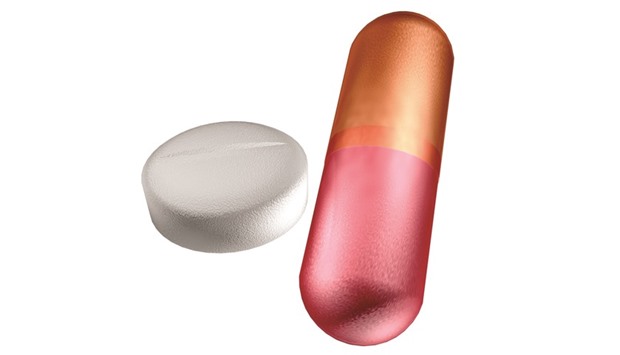From the strict perspective of some investors, astute financial management by a company to bolster its share price is a good thing. By this narrow logic, when it comes to the pharmaceutical industry, we should be unconcerned if drug firms’ share prices are boosted not by new discoveries, but by financial manoeuvres, such as share buybacks or tax inversion.
But the pharmaceutical industry is not an industry like any other. It is intrinsically bound up with the public good, having historically provided the medical innovation that is essential to society’s ability to fight disease.
Furthermore, while patients are the consumers, the actual buyers are often governments. Even in the US, public purchasers account for at least 40% of the prescription drug market.
Governments also bankroll much of the research underlying the industry’s profits. The US government is the world’s largest funder of medical research and development; globally, taxpayers finance a third of spending on health research.
So it should come as no surprise when policymakers insist that the industry’s efforts at innovation be channelled into areas that provide the most benefit to taxpayers and patients, rather than those – like financial maneouvres – that might be most profitable for the industry in the short term.
The pharmaceutical industry is at its best when private profitability and social good coincide, as it does when useful new drugs attract large market shares. But, unfortunately, that is not always the case – and the results can be tragic.
In the field of antibiotics development, in particular, the divergence between profit-seeking behaviour and the public good is taking the world to the brink of crisis.
When antibiotics first entered into common use in the 1940s, previously dangerous conditions, such as pneumonia or infected cuts, became benign conditions that could be treated easily. Antibiotics underpin modern medicine; without them, surgery or chemotherapy become much riskier.
But antibiotics lose their effectiveness over time.
And whereas previous generations of scientists quickly found new substitutes, today, in many cases, doctors are down to their last line of defence. For a range of infections – including strains of pneumonia, E. coli and gonorrhea – there are no replacements in reserve.
One would think this would cause drug companies and their investors to compete to develop new antibiotics. But much of the pharmaceutical industry has abandoned this pursuit. Developing new antibiotics is difficult and expensive – and, crucially, far less profitable than investments in other important fields, such as cancer and diabetes.
Part of the problem is these drugs’ unique importance. Companies are not always able to recoup their investments by setting a high price on patented antibiotics. When a new antibiotic is discovered, public health authorities rightly want to keep it in reserve, insisting that it be used only when all other options have failed. As a result, a new antibiotic may not become widely used until after its patent has expired and its inventors are forced to compete with generic manufacturers.
In January, the pharmaceutical industry took a big step toward solving this problem when more than 100 companies and trade associations from more than 20 countries signed a declaration calling on governments to adopt a new model of antibiotic development.
As part of this new model, the signatories committed themselves to provide access to new drugs for all those who need them, increase investment in R&D that meets global public health needs, and help slow the development of drug resistance in humans and animals.
Governments should encourage and enable the industry to meet these objectives. One way would be to adopt a proposal I made last year and introduce rewards of $1bn or more to those who develop the most-needed types of antibiotics. Such an approach would balance commercial returns with affordability, global access, and conservation, while saving governments money in the long run.
Using this approach to restock the antibiotics pipeline would cost roughly $25bn over ten years. Shared among G-20 governments, this is very little money, and would be a remarkably good investment – especially given that antibiotic resistance currently costs the US healthcare system alone about $20bn per year.
Governments could introduce incentives for antibiotics R&D, paid for with their existing funding streams or new funding streams that are innovative and self-sustaining.
One option would be a small access-to-market fee that could be collected by pharmaceutical regulators in large markets. This system recognises that antibiotics are a shared and exhaustible resource on which the viability of a range of other pharmaceutical products and medical devices – from chemotherapy to joint replacements – depends.
It is comparable to approaches in sectors such as energy, water, or fisheries, where regulatory tools are used to ensure that shared resources and infrastructure are managed and replenished in the interests of both consumers and the producers whose businesses rely on them.
The necessary $2.5bn per year would amount to just 0.25% of global pharmaceutical sales – hardly a strain on an industry that is, by and large, in sound financial health.
And the scheme would be particularly attractive if it could be implemented on a pay-or-play basis, whereby companies could choose whether to invest in R&D or to contribute to a fund rewarding those whose efforts result in the desired drugs.
It is time to turn ideas into effective action and solve the problem of drug resistance. To do that, companies and governments must recognise that antibiotics are not a commodity like any other.-Project Syndicate
- Jim O’Neill, a former chairman of Goldman Sachs Asset Management, is commercial secretary to the UK Treasury, honorary professor of economics at Manchester University, a visiting research fellow at the economic think tank Bruegel, and chairman of the Review on Antimicrobial Resistance.

tablets


